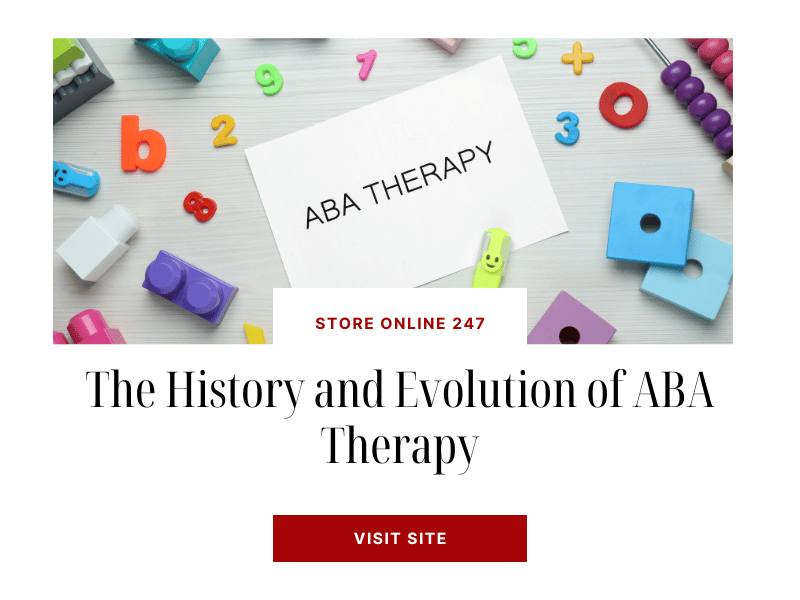
For children diagnosed with autism, the right interventions can make an incredible difference in managing challenges and reaching their full potential. One of the most widely researched and effective approaches is Applied Behavior Analysis, better known as ABA therapy.
This scientifically-based method has transformed the landscape of autism treatment over recent decades. However, ABA did not always have the advanced, nuanced applications we see today.
The evolution of ABA from its origins over 50 years ago to the modern, personalized therapy it is now has been both fascinating and heartening.
ABA has allowed countless families and children around the world to gain skills for communication, relating to others, learning, and independence. Join me in exploring the impactful history and developments of this innovative treatment.
History & Origins
Work of Ole Ivar Lovaas in 1960s
The foundations of ABA therapy stem from work done by psychologist Ole Ivar Lovaas in the 1960s. Lovaas ran a behavioral research lab at UCLA focused specifically on developing interventions for autism, which was just beginning to gain recognition. Building on existing principles of operant conditioning, his pioneering studies targeted behavior modification through the use and reinforcement of rewards to shape step-by-step skill building.
Initial focus on behavior modification
Early ABA work emphasized intensive training and compliance, seeking to replace undesirable behaviors in autistic children by rewarding positive behaviors instead. There was a strict hierarchy and high expectations for children to demonstrate changed actions. Discrete trial training was the norm in highly structured clinic settings.
Studies on intensive ABA for autism
By 1987, Lovaas published groundbreaking findings on applying high-intensity ABA for nearly 40 hours per week with autism spectrum children showing remarkable results. Almost half achieved mainstream classroom readiness by first grade. His conclusions about ABA’s ability to allow children to “recover through talent education” gained widespread attention.
Key Developments
Research advances confirming efficacy
Since Lovaas’ initial evidence, ABA therapy has continued to gain credibility and empirical support. Over decades, study findings published in reputable scientific journals have consistently shown ABA to be highly effective for skill acquisition, cognition, language, academics, and adaptive abilities for a majority of children with autism who receive high-quality, intensive ABA.
Growth in certified providers
As research demonstrated ABA’s outcomes, provider training, certification standards, and oversight are formalized nationally. Governing behavior analysis boards ensured qualified program development and delivery by licensed or credentialed clinicians. Health insurance coverage expanded in many regions driving further demand for certified ABA professionals.
Emergence of verbal behavior analysis
While communication was not an early focus on ABA, pioneers like Dr. Mark Sundberg advanced the understanding of language acquisition as operant verbal behavior. VB-ABA provides a framework for assessing language deficits and building functional communication rooted in Skinner’s analysis of verbal behavior.
The increased role of technology
From video modeling to specialized apps, technology integration helps motivate children in ABA programs using engaging, predictable digital means for skill practice through prompting, reinforcement, and data collection. High-tech tools also assisted remote ABA services.
Shift to more naturalistic methods
Contemporary ABA therapy has moved away from strictly clinical settings, emphasizing natural environment training to teach skills usable in daily life. Approaches also became more play-based, using child-directed interests. Methods focused on nurturing positive social connections through shared activities.
ABA Therapy Today
Standard components and techniques used
Common techniques in today’s ABA programs include reinforcement like praise or rewards for desired behaviors; shaping skills through gradual steps; chaining behaviors into sequences; discrete trial training to learn routines/tasks; incidental teaching in natural contexts; modeling target behaviors; and discrete commands to prompt positive actions.
Typical process from assessment to ongoing treatment
Certified ABA therapists first conduct comprehensive assessments of a child’s skills, learning style, and family priorities to design an individualized treatment plan. ABA aims to impart abilities generalized across settings. Following proven techniques, goals are broken into measurable objectives as the child masters foundational to more advanced milestones through repetitive, positive practice.
Delivery settings like clinics, homes, schools
Modern ABA therapy is now delivered in more natural settings of homes, and mainstream schools and embedded into community activities for better transfer and independence. However private clinics remain a structured option for dedicated treatment hours. Coordinated support across all settings is ideal.
Integration with other therapies
ABA distinctively focuses on behaviors, while complementary therapies like speech, occupational therapy, or social skills groups often integrate alongside ABA’s structure to build communication abilities. Multiple coordinated therapies prove more effective rather than an ABA-only approach.
Future Directions
Expanding access through training and coverage
Raising awareness to expand regional infrastructure for affordable, consistent ABA remains vital so location and income are not barriers. Government-subsidized regional training programs could alleviate specialist shortages. Advocacy continues for public and private insurance coverage to lower prohibitory out-of-pocket costs preventing consistent treatment.
Tailoring with person-centered planning
While ABA may evoke images of rigid traditional programs. The future is customization embracing person-centered planning – understanding the unique strengths, challenges, preferences, and motivators of each child and family. Personal aspirations help shape teaching functional target skills. ABA integration into school curricula also aims to tailor delivery per pupil.
Support across different ages and abilities
Expertise developed in pediatric autism now has growing evidence as a methodology for many. It helps teenagers, adults, and non-autistic children gain self-regulation, social acumen, and decision-making abilities lacking in disorders like ADHD or anxiety. Continued expansion would benefit different groups.
Focus on inclusion and independence
Alongside academics and behavior guidance, modern ABA increasingly prioritizes higher executive functioning. And emotional skills and promotes inclusive behaviors for independent living. Curricula teach autonomy, self-advocacy, building friendships, and other functions instrumental in societal acceptance and participation.








